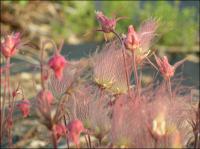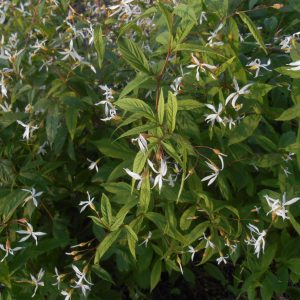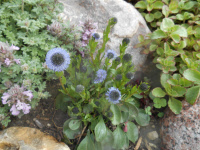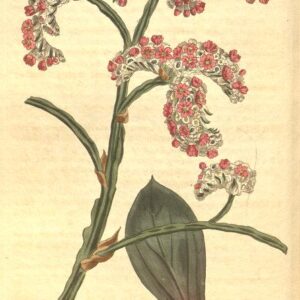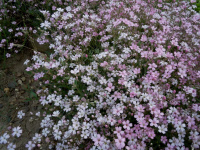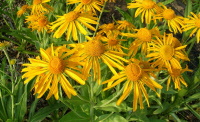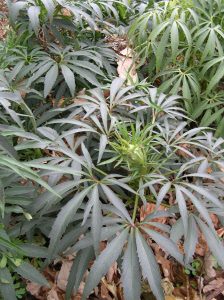Perennials & Biennials
Showing 201–208 of 485 results
-
Geum triflorum Prairie smoke, Old Man’s whiskers Z 3-7
Pale purplish-pink dangling cup-shaped flowers in spring to early summer, followed by hair-like, pink seed heads like the hair on a troll doll.
Pale purplish-pink dangling cup-shaped flowers in spring to early summer, followed by hair-like, pink seed heads like the hair on a troll doll.
Size: 10" x 8" but slow to grow to this width
Care: sun in well-drained to moist well-drained soil
Native: all of northern No. America, Wisconsin native
Wildlife Value: attracts butterflies, bees, wasps, and moths. Resists deer and rabbits.
Awards: Great Plants for Great PlainsIntroduced to gardens in 1609. Many Native American medicinal uses. Blackfeet used it to cure coughs, skin sores and wounds on people and horses, swollen eyes, canker sores, and fuzzy thinking in people. Crushed, ripe seeds made a perfume. Okanagan-Colville women made a love potion from the roots, as well as curing vaginal yeast infections. The Eastern Cascades of Canada brewed a medicinal tea for eye-wash, sore throats, and general aches from the plant. Sioux used it for many ailments: sore eyes, canker sores, sore throat, perfume, wounds, and added it to mixtures of plants for smoking. Collected by Meriwether Lewis on June 12, 1806 on the Weippe Prairie, not far from the villages of the Nez Perce in Idaho.
-
Gillenia trifoliata Syn. Porteranthus trifoliata Indian physic Z 5-9
White stars flutter as butterflies atop wire-like red stems in June. In fall foliage turns red. One of internationally known garden designer Piet Oudolf’s 100 “MUST HAVE” plants, Gardens Illustrated 94 (2013)
White stars flutter as butterflies atop wire-like red stems in June. In fall foliage turns red. One of internationally known garden designer Piet Oudolf’s 100 “MUST HAVE” plants, Gardens Illustrated 94 (2013)
Size: 3’ x 2’
Care: part shade in moist well-drained soil
Native: from Canada to Georgia
Wildlife Value: Its nectar attracts many bee species and butterflies. Deer resistant.
Awards: England’s Royal Horticultural Society Award of Merit and Great Plant Pick Award from Elisabeth Carey Miller Botanical Garden.Cherokee chewed the root to alleviate bee stings and toothaches. Small sips of the tea relieved asthma and colds, (larger quantities lethal.) Native Americans took the dried, powdered root as a laxative. Gillenia named for German botanist Arnold Gille (1586-1633) published by another German botanist Conrad Moench. 1st collected by Rev. John Banister who moved to colonial Virginia in 1678. A gunman mistakenly shot and killed him while he collected plants. Offered for sale in Bartram Garden’s 1783 Broadside, America’s 1st plant catalog. Jefferson considered this medicinal in Notes on the State of Virginia. Grown at America’s 1st botanic garden, Elgin Botanic Garden 1811.
-
Globularia cordifolia Globe daisy, Wedge leaved globularia Z 5-9
Dense, blue, globe-shaped umbels in spring
OUT OF STOCK
Dense, blue, globe-shaped umbels in spring, mat forming, leathery, spoon-shaped leaves.
Size: 5” x 12”
Care: sun in well-drained soil
Native: alpine pastures in Switzerland and Pyrenees
Awards: Royal Horticultural Society Award of Merit.Collected before 1753. “The most desirable (Globularia) for the rockwork is the neat G. cordifolia which is a little prostrate trailing shrub with bluish flowers.” William Robinson 1879.
-
Globularia nudicaulis Globe daisy Z 3-8
Cobalt blue puffs on naked stems rise above compact rosettes of glossy oval leaves, May-June
Cobalt blue puffs on naked stems rise above compact rosettes of glossy oval leaves blooming May-June
Size: 4-8” x 4”
Care: Sun to part shade in well-drained soil. Drought tolerant/rock garden plant.
Native: northern Spain to the Pyrenees MountainsIn gardens before 1753
-
Goniolimon speciosum syn. Statice speciosa, Limonium Dwarf Statice Z 3-9
Evergreen, flat, agave-like blue-green rosette of leaves. In mid-summer light pink, flat-topped flower clusters held on leafless stems 10-12” above foliage. Very different, fun and easy to grow.
Evergreen, flat, agave-like blue-green rosette of leaves. In mid-summer light pink, flat-topped flower clusters held on leafless stems 10-12” above foliage. Very different, fun and easy to grow.
Size: 10-12’ X 8”
Care: sun in well-drained soil
Native: Steppes of Eurasia: Russia, Siberia, Mongolia & western ChinaCollected by German naturalist Johann Georg Gmelin (1709-1755)1st described in 1753 then named and renamed several times. Pictured in Curtis’s Botanical Magazine 18. No. 656 1803.
-
Gypsophila repens ‘Rosea’ Creeping baby’s breath Z 4-7
Tough but dainty appearing pink flowers on short, thin stems smother gray-green leaves from June to October. Excellent groundcover, front of the border or rock garden plant.
Tough but dainty appearing pink flowers on short, thin stems smother gray-green leaves from June to October. Excellent groundcover, front of the border or rock garden plant.
Size: 8" x 10-12"
Care: Full sun in well-drained soil.
Native: Mountains of central and southern EuropeGypso is Greek meaning “gypsum or lime.” Phylos means “loving.” Plant requires limey (alkaline) soil. Discovered in Siberia in 1774.
-
Helenium hoopesii syn. Hymenoxys hoopesii Orange sneezeweed, Owlsclaws Z 3-8
Large mustard yellow, tending to orange, daisies with drooping petals and yellow center flowers May and continuing to September, if deadheaded.
OUT OF STOCK
Large mustard yellow, tending to orange, daisies with drooping petals and yellow center flowers May and continuing to September, if deadheaded.
Size: 3’ x 2’
Care: sun in moist well-drained soil
Native: Rocky Mountains
Wildlife Value: attracts bees, butterflies & moths. Rabbit and deer resistant - toxicNavajo boiled its petals with juniper ash to make a yellow dye. They also chewed the roots for their sugary taste. Indians of the Great Basin dried the leaves and flowers and inhaled them to remedy headaches, while a snuff of only dried flowers, not the leaves, remedied hay fever. Collected by C.C. Parry (1823-1890) given the name “King of Colorado Botany.” Liberty Hyde Bailey (1933) referred to this as “a very fine border plant and especially laudable for cut flowers.”
-
Helleborus foetidus Bear’s foot Z 5-8 POISON
Nodding chartreuse cups with purple accents emerge in March-April from evergreen, palmate foliage. As much as a Robin - the 1st sign of spring.
Nodding chartreuse cups with purple accents emerge in March-April from evergreen, palmate foliage. As much as a Robin – the 1st sign of spring.
Size: 12-24" x 18-24"
Care: full to part shade in well-drained to moist well-drained soil.
Native: W. Europe
Awards: Great Plant Pick Award from Elisabeth Carey Miller Botanical Garden; England’s Royal Horticultural Society Award of Merit.
Size: Deer and rabbit resistantThe name Helleborus is Greek from hellein meaning “to kill” and bora meaning “food” referring to the plant’s poisonous qualities if eaten. Foetidus because crushed leaves are malodorous, but the flowers are sweetly fragrant. In gardens before 1753. In 1876 it was a “well known old-fashioned plant…” The Garden.

